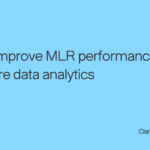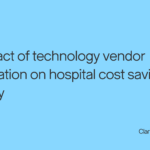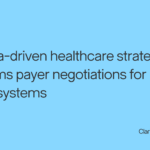As price transparency mandates continue to expand visibility into healthcare pricing from providers and insurance plans, most of the focus has been on how greater rate transparency benefits patients and consumers. However, price transparency in healthcare can also benefit payers. Beyond merely satisfying regulatory mandates, price transparency tools for payers offer a strategic advantage that can drive growth, optimize networks, and reduce costs through helping leaders make more informed decisions and develop strategies to attract and retain members and optimize networks. For decades, the opacity and complexity of healthcare rates kept patients in the dark, often leading to unexpected expenses, frustration, and difficult financial decisions. Some simple tools can give members accurate and instant insights into costs, helping them plan their care with their budgets in mind. Access to pricing information is critical to support member satisfaction. Members who trust their health plan to provide reliable cost information are more likely to re–enroll. Encouraging members to stay with a plan can have significant financial benefits: one study found that care systems that retained patients boosted revenue by nearly 20 percent. Providing accurate information online can also ease the administrative and customer service burden on payers by reducing the number of phone calls and inquiries on other channels they receive seeking pricing information. One study found that Americans cumulatively spend an average of 12 million hours a week talking to their insurer—some of which could be prevented with more accessible information on costs. These savings could potentially be passed onto members, keeping rates lower. In addition to enhancing member satisfaction, price transparency tools can play a crucial role in reducing healthcare costs for both payers and health plans. By using advanced tools like predictive analytics and utilization management systems, health plans can proactively manage costs and improve care outcomes. By making the cost of care more transparent, health plans can encourage providers and members to choose more cost-effective care pathways. This not only helps to reduce costs but also ensures that members receive high-quality, efficient care. Another key area where price transparency tools for payers can drive success is in network optimization. By using network optimization software and provider performance dashboards, health plans can build and maintain networks of high-performing, cost-effective providers. Ensuring that healthcare providers, services, and fees align with quality expectations and member needs while concurrently managing costs is essential for health plans’ growth and ongoing success. Price transparency data can help them nimbly balance these two objectives. Finally, price transparency tools can give health plans a significant competitive advantage in the marketplace. By offering tools that allow members to easily compare costs and quality across providers, health plans can differentiate themselves from competitors and attract more members. It’s not enough to simply put tools online that provide access to pricing information. Members need to know how to find the tools, understand their benefits and features, and use them effectively. This is particularly important for those payers who may not be as digitally savvy. Newsletters, email blasts, social media channels, and notices on bills with an explanation of benefits (EOBs) are a few ways to remind members that these tools are available. Online tutorials, illustrated step-by-step explainers, webinars, and customer support can help encourage members to take advantage of this readily available information. Payers should also continuously monitor how members and providers are using price transparency tools. Usage data can point to potential adjustments and valuable information about user behavior that can be acted on to make tools even more useful. Health plans should also actively solicit member feedback to gather ideas for improvement and suggested features or functionalities. By strategically utilizing price transparency tools for payers, health plan providers can go beyond compliance to drive significant success. These tools can enhance member satisfaction, reduce healthcare costs, optimize provider networks, and give health plans a competitive edge. Ultimately, price transparency is about meeting regulatory requirements and creating a more efficient, transparent, and member-focused healthcare system that drives long-term success. How price transparency tools for payers can enhance member satisfaction and retention
Reducing healthcare costs with price transparency tools for payers
Network optimization
Boosting competitive advantage
Tactics for promoting price transparency tools for payers
Reaping the benefits of price transparency
- Author Details





